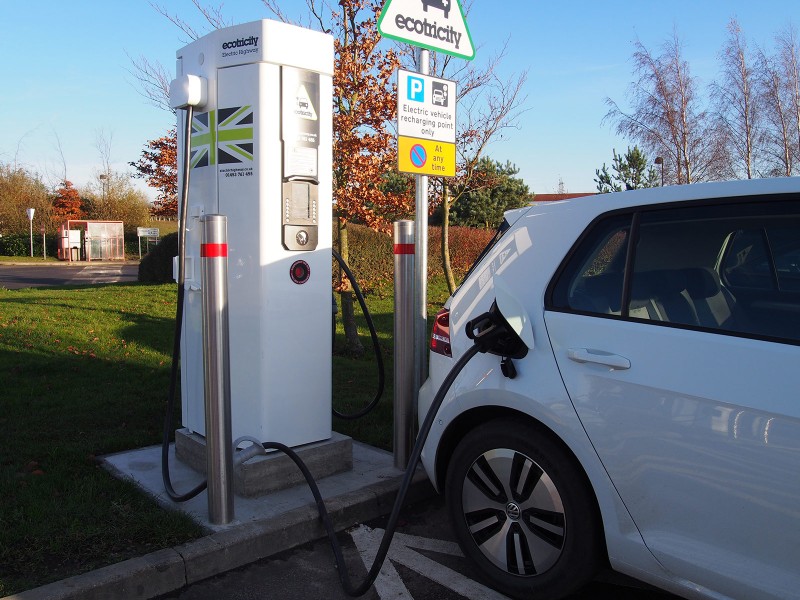As electric and plug-in hybrid sales grow, strain on the existing infrastructure is already beginning to show. Some battery electric vehicle (BEV) owners are finding themselves in the situation whereby they cannot gain access to charge points because they are taken up by plug-in hybrid electric vehicles (PHEV).
Plug-in hybrid sales have rocketed from a mere 1,074 vehicle registrations in 2013 to a whopping 7,821 in 2014. Coupled with the growing trend for manufacturers launching evermore plug-in hybrids, it is a clear sign sales will continue to increase. The result will mean more and more plug-in vehicles (both BEV and PHEV) will use charge points dotted around the country.
The fact that PHEV owners use charge points in itself, is not a problem. Instead, the issue appears to be more with owners who leave their vehicles for extended periods of time plugged into a charge point, despite the actual charge having completed. One such example is at IKEA stores which offer Ecotricity charge points in their car parks. The problem at IKEA stores is that the rapid charge points available are capable of charging vehicles faster than the average time people spend in the shop itself. In certain circumstances, the result is a car requiring only a half hour charge is often left for much longer periods of time.
The general consensus is that the offending plug-in car owners are being selfish and preventing others from charging. So, what are the do’s and don’ts at charge points? Ecotricity, the electricity and gas supplier behind the majority of rapid car charge points located at IKEAs and service stations around the UK, issue their own suggested guidance to users of their network. Their advice is as follows:
Please DON’T
Park petrol/diesel cars in charging bays designated for electric cars
It’s called “ICE-ing” – parking an Internal Combustion Engine car (Petrol, Diesel or LPG) in designated electric vehicle charging bays. It’s never acceptable, no matter how crowded a car park.
Unplug another electric car while it is charging
The basic rule of thumb at a charge point is…first come, first served. Never remove a connector from another electric car during a charging session, as this may result in damage to the charger and/or car.
Hog a charger…charge up and move on
Electric Highway rapid chargers are designed to do exactly that – deliver a rapid charge – in no longer than 30 minutes…charge up and let someone else use it.
Please DO
Help fellow electric motorists to charge
If you arrive back at your car to find another EV driver has left a note & number, it’s good form to simply drop them a polite “Charge session completed, thanks” text.
Notify the charge point operator if a charge point has a fault
Most faults can be identified remotely by the Electric Highway team – but some, like vandalism, cannot. Please let us know – we can’t fix it if we’ve not been made aware.
Set a good example
Please be polite to all drivers – EV, Hybrid or ICE. We are ambassadors for the uptake of electric vehicles.
The guidance already exists, but preventing the use of chargers by selfish individuals will remain a difficult challenge to overcome. One such suggestion is to fine owners of vehicles left at charge points for extended periods of time. Another theory is the problem will only exist while it is free to park and charge using Ecotricity points.
There has been some mention too, of BEVs taking priority over a PHEV. While there is certainly an argument in favour of this, since a BEV only has the one source of power whereas a PHEV has two, there are many PHEV owners who benefit from the electric only range and often prime located parking spaces, and why not? Essentially, charge points are offered on a first come, first served basis. The same is true of fuel stations where it is not uncommon to have to queue for fuel. Likewise, many fuel stations now offer mini-supermarket shops which mean some people think it okay to fill up their vehicle, leave it at the pump and go shopping for groceries; all the while blocking the pump from being used by another customer.
The issue, in many ways, lies with charge times of vehicles. While PHEVs may be able to drive away unaffected by a lack of charge point using petrol or diesel power, a battery electric vehicle cannot. Charge times vary enormously, but Ecotricity’s guide time of half an hour just goes to show the amount of time some people must wait before they are able to charge their car. Should a BEV be plugged into a charge point and another turn up shortly after, there may be an hour wait before the second car can drive away. Whether that car is a PHEV or BEV doesn’t make too much of a difference. Instead, it seems the main gripe is with owners who flaunt the system.
Fines and legislation may offer some consolation to charge point offenders in public areas, but they will have little effect on privately owned land where many chargers are located – such as IKEA and service stations.
One potential solution comes in the form of an app, known as “ChargeBump” which aims to provide a way in which an EV driver can prompt another that their charge has completed by typing in the registration of the vehicle plugged in. The app is being developed by a community of EV owner/drivers and should be made available on iPhone, Android and Windows Phone devices. Its release is yet to be finalised.
One thing is certain, the problem will continue until either more charge points are installed, or charge times reduce to the point where it is no longer an issue. The only interim solution is for people to be vigilant of others and not be selfish. Manners and consideration for others are key.
Sources; http://www.ecotricity.co.uk/for-the-road/ev-driver-etiquette
Find out more about ChargeBump app here: https://speakev.com/threads/chargebump-a-simple-plan-to-do-away-with-ev-charge-rage.2094/#post-18265

